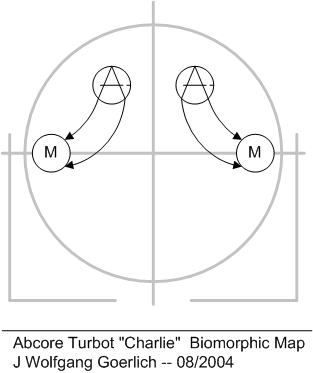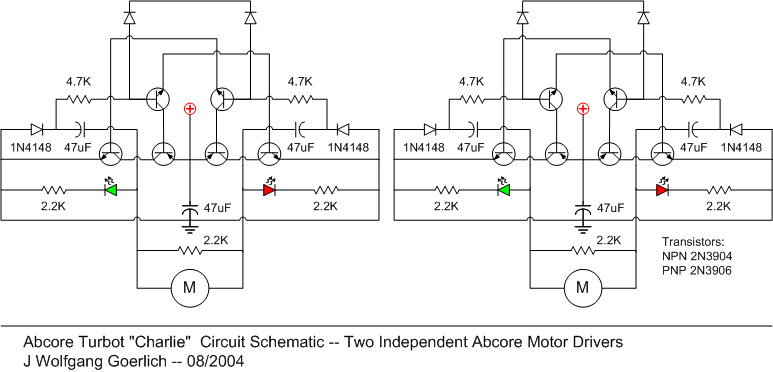
Abcore Turbot Circuit Description
One difference between a traditional robot limb and a BEAM robotic limb is the replacement of an accurately measuring servo with chaotically reacting DC motor load. The ideal is a limb that automatically conforms to the environment, seeking a state wherein the motor is under the least load.
Thus the Adaptive Bicore Biomech motor controller (Abcore) is an exemplar BEAM controller. Without any input or bias, the Abcore’s oscillation will depend entirely upon motor load. We used this property in our Turbot by mechanically coupling two Abcores.

As Mark Tilden put it in Junkbots, Bugbots, and Bots on Wheels, "the ABc is still not predictable ... It's unstable. It's explosive. It's inconsistent and incomplete. I like it a lot. Hope you have fun with it."
Having two independent Abcores gives our Turbot two states: turning and forward. Under normal conditions, forward is the least energy state. The Turbot will continue forward until a flagellum strikes an obstacle and loads up the motor. It will then reverse the flagellum and go into the turn state. This puts a higher load on the motor and thus, after a few seconds, the Abcore will reverse and resume moving forward.

Advancing Thoughts
More states could be made by adding more limbs. The next obvious step is a Turbot with three flagella. This would have theoretically have nine states (3 motors ^ 2 state). Another idea is to build a quadruped walker and have each limb independently articulated by an Abcore. This may exhibit a variety of gaits providing it can remain on its feet.